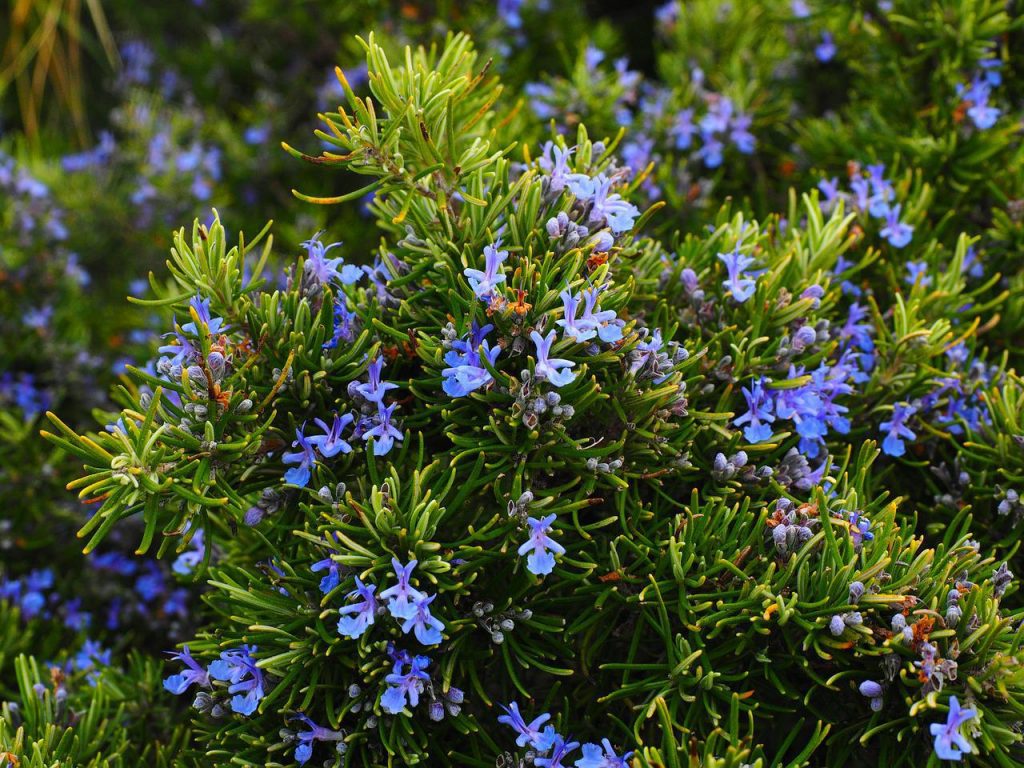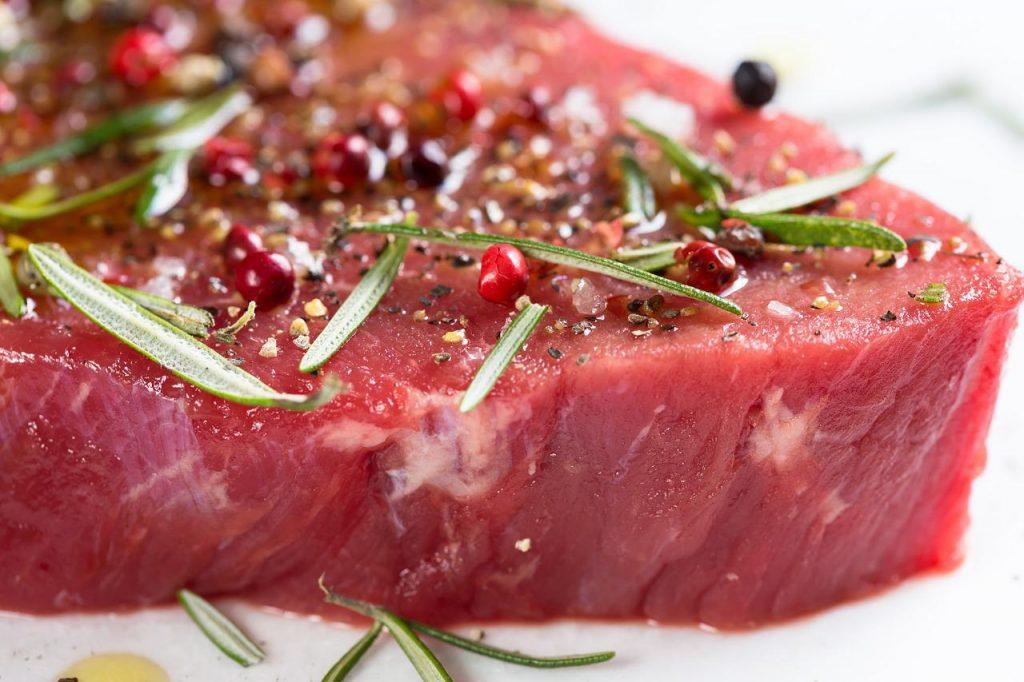The star of the barbecue, the evergreen fresh rosemary is the harbinger of Mediterranean flair. In ancient times it was used for medicinal purposes, but today it is more for its flavour.
Rosemary in the past
In ancient times it was used for medicinal purposes, but today it is more for its flavour.
Rosemary is considered one of the oldest incense, mainly for very simple economic reasons. Since rosemary was grown in the Mediterranean in large quantities and wild, it was more easily available to the poorer classes than the expensive incense and myrrh-based incense. Rosemary was also burnt in shrines to ward off evil spirits and diseases. The ancient Greeks believed that hiding a sprig of rosemary under a pillow would ward off nightmares, spirits with malicious intentions and ensure a good night’s sleep. In addition, hanging the small green plant over the porch would keep thieves away, keep the house healthy and prevent various spirits, goblins or fairies from stealing babies.
According to the Greeks, rosemary was not only effective against evil spirits, but also for the cultivation of wit. Both Greek scholars and the students who imitated them liked to wear sprigs of rosemary in their hair – to improve their mental performance. Over time, rosemary also became a symbol of memory, so much so that mourners often threw rosemary sprigs into the grave as a symbol of their memory of the deceased. (Rosemary does indeed improve circulation and ensure better blood supply to the brain, as well as improving concentration.)
As well as being protective, rosemary also kept moths at bay, which is why rosemary sprigs were often placed on drying clothes to absorb the essential oil of the plant, thus providing protection against pests and a great smell.
In Roman times, Pliny and his contemporary Dioscorides, who wrote De Materia Medica, also wrote about the use of rosemary and its application in medical practice.
Rosemary first spread to Europe thanks to the Roman legions, and gained real popularity in the Middle Ages. In Spain, rosemary was cultivated from the 13th century onwards, where, in addition to its medicinal and culinary careers, it was also used for spiritual exoticism. The Spaniards used the herb specifically to fight witches, and would pin a sprig to their hats during long country walks to protect themselves from highwaymen. It was also believed that if a man was indifferent to the smell of rosemary, he was probably insensitive to its pleasures.
Rosemary has also become a symbol of loyalty over the centuries, in addition to remembrance. In many cases, the bride wore a wreath of rosemary, which symbolised love and friendship as well as fidelity. Henry VIII’s lucky fourth wife, Anne of Cleves, who consumed many wives, also wore a wreath of rosemary on her head. At the time, it was fashionable for wealthy families to hand out gold-plated rosemary sprigs to guests attending the wedding ceremony, so that the wedding party would remember the occasion with a good heart.
Perhaps one of the most beautiful examples of the relationship between memory and rosemary is found in Shakespeare’s Hamlet, where the now deranged Ophelia collects a bunch of wild flowers, including rosemary, and says to Laertes: “Here’s a rosemary bunch for remembrance, I pray thee, my rose, to remember me” (Act V, Scene IV).
Following in the footsteps of the ancient healers, medieval doctors also believed that the best cure for nightmares and anxiety disorders was to place a sprig of rosemary under the patient’s pillow. In the Middle Ages, however, it was also discovered that to improve the air in hospitals and prevent the spread of infections, it was worth burning juniper berries and rosemary in wards. This practice was later used by French doctors during the Second World War.
Rosemary also gained incredible popularity among Christians, as it was believed that Mary spread her cloak on a rosemary bush during her flight to Egypt, and the previously white flowers of the plant were colored by Mary’s blue cloak.

In addition to fighting infection and improving the air in hospitals, rosemary also had other roles to play. Medieval doctors strongly believed the plant could protect against the plague, so when the bubonic plague killed 38,000 Londoners in 1603, demand for rosemary soared that it was only available at a gold price.
Rosemary is not a panacea, but it is true that during the plague epidemic of 1630 in Toulouse, a few thieves were spotted looting infected houses for a living, robbing the sick and dead, and yet they were unharmed and uninfected. They were finally caught, and although the judge sentenced them to death, they escaped because they had told how they had protected themselves against the deadly disease. It turned out that the thieves had rubbed themselves with herbal wine vinegar before each of their raids, which is how they escaped the plague. The following spices were mixed into the wine vinegar: sage, thyme, marjoram, lavender, rosemary. The 4 thieves’ vinegar was produced until the 20th century using a recipe defined by the thieves, and thanks to the germicidal herbs it contained, it really did help to keep the plague at bay.
Health Benefits of Rosemary
In addition to its soothing effect, it has diuretic, stomach and digestive, antispasmodic and antiseptic properties. It is good for treating fatigue, neurotic problems and headaches. It stimulates the immune system and improves blood circulation. It helps prevent premature hair loss, helps restore scalp balance and strengthens the hair.
It can be used both internally and externally. Rosemary essential oil, on the other hand, should only be used externally!
Fresh Rosemary in the Kitchen
Rosemary was first used in gastronomy for its properties similar to cinnamon, which can mask the rotten smell of less fresh meat, and as hygiene conditions improved, rosemary has remained in kitchens and summer is unthinkable without it. It is most often used with meat. It harmonises best with lamb, but it can be added to any meat from chicken to beef. In addition to casseroles, it is also used to season and marinate meat cooked in one piece, but it is also often used to flavour vegetable soups, stews and salads.
When to Buy Fresh Rosemary
Rosemary is available fresh all year round, it is not a very demanding plant, so if given enough water it can be easily grown on a patio, windowsill or in the home with a pot. If you don’t have fresh rosemary at home, you can choose to buy ground or crumbled dried rosemary. Unlike most herbs, the needle leaves of rosemary do not soften completely during cooking, so it is worth keeping a ground version as in some cases it is better to cook with it than to bother with needle leaf pieces. If you opt for the leaf, however, it is good to add it to the dish in a spice ball.
How to Store Rosemary
If you buy freshly cut rosemary, store it in a glass of water for a short time or wrap it in a damp tea towel and keep it in the fridge for 1-2 days. But you can also dry out the bunch by hanging it in a dry, cool place. Store dried rosemary in a sealed container in a dark, cool place.
Best Rosemary Pairing
Rosemary also goes very well with many other herbs, and it is no coincidence that it is often part of a bouquet garni (pronounced bouquet garni). In addition to thyme, parsley and bay leaves, which are part of the bouquet, marjoram, basil, sage, fennel, tarragon and peppercorns are also good partners for rosemary.
Bouquet garni – a beautiful blend of many spices to bring out the flavour of a dish in one go at the end of cooking.
How to use Rosemary?
As well as seasoning meats and vegetables, you can add a sprig of rosemary to bread dough, egg dishes, throw a sprig into the oil before frying meat, use it to make a herb butter for summer barbecues, or throw a few sprigs on the coals before cooking meat. You can also sneak some rosemary into fruit salads or make a soothing tea. It’s also a great herb for dairy desserts. It can also be added to crème brűlée or custards, ice creams, custard pies or even sponge cakes, in moderation.
Pumpkin with bacon and rosemary
Ingredients:
1 pound of pounds of pumpkin
Bacon
3 branches of rosemary leaves
Freshly ground pepper
1 slice of lard
Preparation. Place these in a large baking dish.
Peel the rosemary leaves off the stems, finely chop them, not too finely, and sprinkle over the pumpkin. I slice the bacon, dice a little of the lardons and pour this into the pan. I sprinkle salt and a little pepper over the ingredients, turn them over thoroughly, cover with foil and pop them in the oven at 200 degrees. After 40 minutes, I look at it. The pumpkin should be soft by then. If I’m in the mood, I’ll roast them a little under the grill.
Last updated: September 24, 2023


